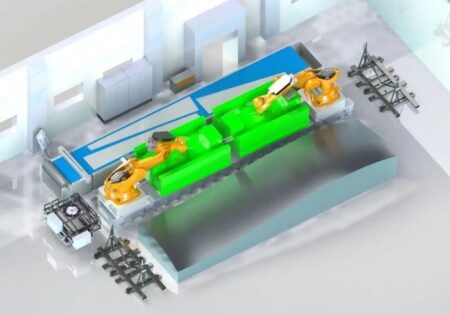Icing on aerodynamic surfaces such as aircraft wings and engine inlet guide vanes usually happens when supercooled droplets accumulate at high altitudes. Once formed, the ice reduces performance. In severe conditions, aircraft may stall and lose engine power.
I have been conducting research with a PhD candidate at the University of Virginia’s (UVA) icing facility since May 2017 to try to find a solution to this icing problem. We have been conducting ice accretion/adhesion tests on various objects in an icing wind tunnel, and then using hydrophobic surfaces to mitigate icing accretion.
We are testing two hydrophobic materials – an oil-infused elastomer developed at UVA and a ceramic cylindrical porous material developed by two Greek researchers.
After characterizing the coating by measuring droplet static contact and roll-off angles, the oil-infused elastomer is applied to an airfoil using the drop-cast technique. The airfoil is then inserted in the test section of UVA’s on-site icing wind tunnel for icing tests. These tests are conducted at a temperature of -10°C (14°F), with an airflow velocity of 30m/s. Performance is determined by measuring ice accretion heights, time for ice to shed, and the maximum temperature at which ice accumulates.
My role is to aid in the testing of the coating in the icing facility by ensuring proper setup, coating application and development, and the running of icing tests. During my time on the project, I’ve improved the icing facility’s air pressure setup, which increased its repeatability and testing capabilities. I noticed errors by comparing icing characteristics with NASA’s LEWICE icing simulations and monitoring spray during testing.
The hollow ceramic cylindrical porous material uses a backpressure system to supply air through the inside of the material to ‘levitate’ water droplets impacting the surface. In theory, the backpressure will facilitate water droplets to roll off the surface, thus reducing ice accumulation. Before and after icing tests, the porous cylinder is inspected for cracks that may inhibit a uniform airflow through the material. It is then inserted into the test section of the icing wind tunnel and attached to the backpressure system. Icing tests are conducted at -10°C and -20°C (14°F and -4°F) with an airflow velocity of 30m/s, with a constant backpressure of 10psi supplied.
The sample’s performance is evaluated by comparing the maximum ice height after each icing test to that of a solid aluminum cylinder. After every test, the porous cylinder is treated to recover its original wettability properties.
I am the point of contact between the Greek researchers and UVA on the porous material project. The material’s performance is determined by measuring icing height when backpressure is supplied and comparing it to the height without backpressure. So far, I have made key observations of the material’s repeatability by analyzing the degradation of the material’s surface throughout icing tests. I limited material degradation by employing various recovery techniques.
Both the coating and the porous material projects are innovative approaches to allow aircraft to operate safely in icing conditions. Although ceramics have yet to be extensively used in aviation due to their brittle nature, their role in preventing aircraft icing may spark interest in the field. As I continue to investigate these solutions, not only will I improve my education to become an engineer, but also progress the work being done to improve the safety and performance of aircraft.
Written by Matt Asper from the University of Virginia





